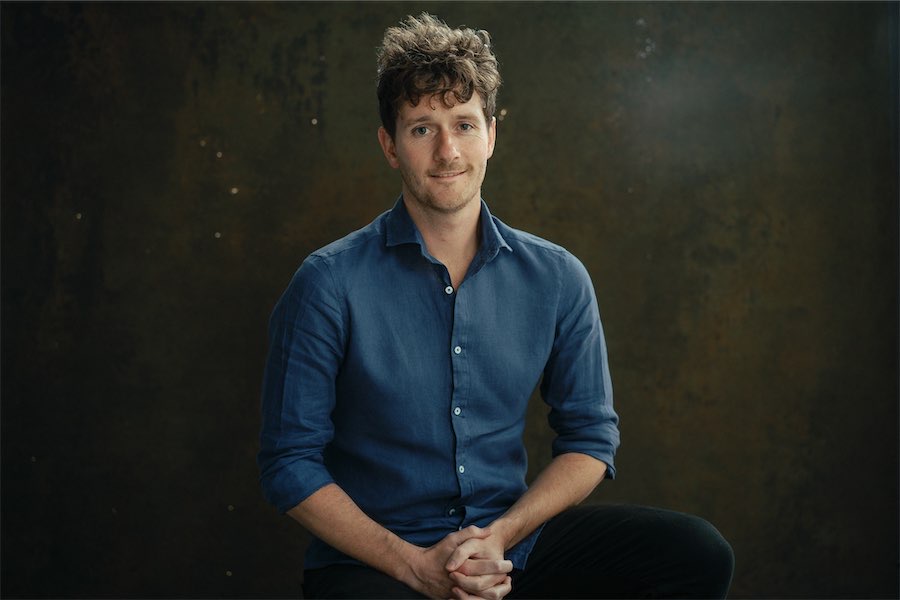
Music / “New Letters to Esterhazy”. At Larry Sitsky Recital Room, ANU School of Music, July 28. Reviewed by TONY MAGEE.
TRAINED as a virtuoso concert violinist in Vienna, Rupert Guenther’s musical passions cover a diverse range of styles.
Immersed in music from a young age, his parents hosted house concerts in their Toorak mansion “Carmyle” over a 50-year period. He thought nothing of local and international concert artists being engaged to play there, or sometimes just popping in the back door for a cuppa.
Beginning with “New Letters to Esterházy”, Guenther played five movements, all stylistically different, as a homage to that giant of the classical music era, composer Joseph Haydn, employed at the court of the wealthy Esterházy family and also in Vienna. The premise was sending music back to him, from the 21st century, as a reaction to his own works.
Completely improvised, this performance, while sticking to the premise, was unique for the audience, as it was all being invented on the spot as he played his violin.
Each movement did seem to have a key centre, however. The first revealed a clear, almost penetrating tone, mostly using the high register of his instrument and in free time. The closest artistic parallel comes not from music at all, but painting.
Watching an artist create spontaneously, the brush strokes on the canvas coming in free-fall straight from the head.
Deeply personal, the work continued with the second movement, contrasting in triple time and was much more legato and melodic. Guenther sometimes plays “within the cracks” – a musical term suggesting the inclusion of quarters tones or even eighth tones. This movement saw the lower register of the violin revealed with dark brooding tones emerging.
The third movement saw intense double stopping as he created intense, bold harmonies in fifths and fourths. It was music full of drama and intensity which grasped the listener. An intense palette of tonal colours and shadings with greater dynamic range was also a feature of this section.
The fourth was the most cantabile of the sections, almost verging on a reflection on folk music from The British Isles and including some passages reminiscent of composer Ralph Vaughan Williams.
The final movement was sparking and lively, notes skittering around in staccato, rather like birds at play.
After interval, Gunther returned to play three pieces, beginning with “Hakone Maple”: a reaction to his time in Tokyo and Yokohama when he was 17.
Paradoxically, the piece is also aligned with Gypsy influences from Hungary and Romania, but combined with Japanese flute-like qualities. Guenther was able to extract these qualities from his instrument and it was uncanny listening to and seeing how he did it.
“So Many Stars”, where as his terms, “science meets art”, used a Middle-Eastern interval and scale system.
During a trip to Kashmir when he was 19, Guenther found himself attending prayers at dawn, meditating in the Himalayas and being transported on mystical journeys, but incredibly, combining his musical thought process with Australian indigenous art.
The result was a piece combining these two contrasting musical influences – worlds apart – to form his piece “Wandjira”, which closed the show. Evoking moths darting around the firelight, the piece pays homage to the Rainbow Serpent.
Throughout the concert, Guenther’s improvisations demonstrated violin virtuosity, great skill, diverse and sometimes beautiful tone production, and a multitude of tonal shadings.
Not conventional in any way shape or form, Guenther admitted at the end, that his particular penchant for abstract improvisation was not easily assessable to some listeners, but I found myself, with dedicated persistence, accepting and enjoying what he created for us.
Who can be trusted?
In a world of spin and confusion, there’s never been a more important time to support independent journalism in Canberra.
If you trust our work online and want to enforce the power of independent voices, I invite you to make a small contribution.
Every dollar of support is invested back into our journalism to help keep citynews.com.au strong and free.
Thank you,
Ian Meikle, editor




Leave a Reply